Looking to elevate your personal style with layering clothes while staying cozy and comfortable during transitional seasons?
Look no further than the art of layering!
An insulating layer not only helps regulate your body temperature, but it’s also a fantastic opportunity to showcase your creativity and individuality. Layering is essential for staying warm in cold weather, making it a practical and stylish choice.
Whether you’re a seasoned fashionista or just starting to experiment with layering, this guide will offer valuable insights and tips to help you layer clothes confidently with style and warmth.
We’ll cover everything from the function of base layers to the choice of materials for specific seasons and events. You’ll also learn how to layer to flatter your body shape, accessorize layered outfits with personal flair, and more.
So get ready to layer up in style and join us as we dive into the details of layering clothing to regulate body heat and create fashionable and warm clothing combinations.
Layering Techniques
Base layer: Moisture management
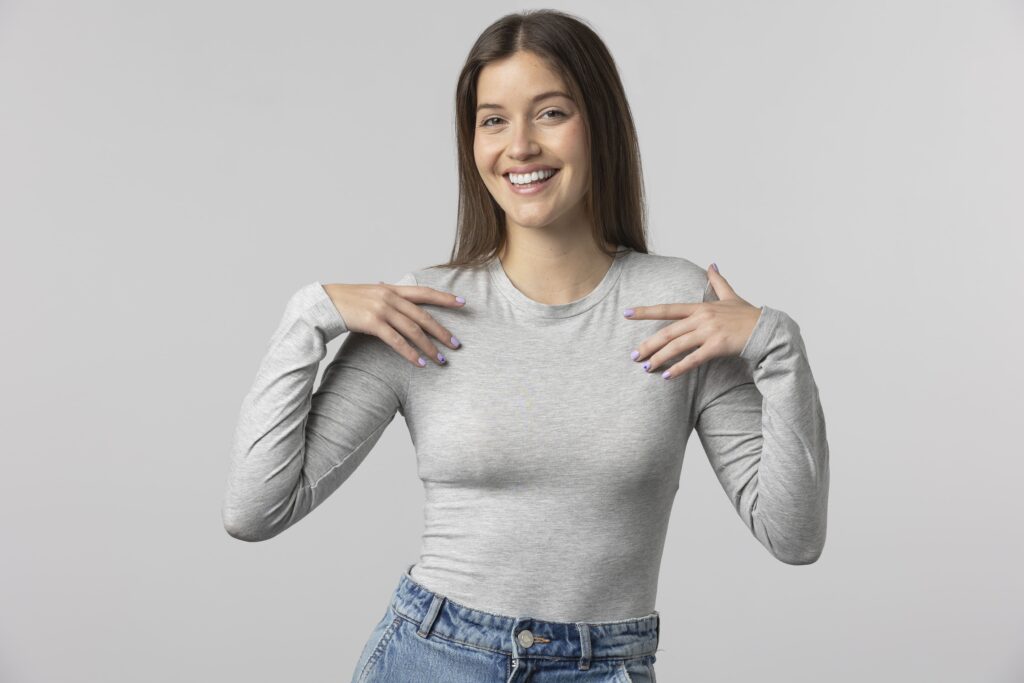
When layering your clothes, the base layer is the cornerstone. A base layer’s job is to regulate your body temperature and provide a comfortable foundation for your outer shell. Cotton is not recommended because cotton retains moisture, which can leave the wearer feeling damp and cold.
This layer is in direct contact with your skin and is responsible for wicking away sweat and moisture.
Ideal materials for the base layer include Merino wool, silk, and synthetic fabrics, which are soft, comfortable, and offer exceptional moisture-wicking properties.
Examples of base layers include long johns, undershirts, and base layer tops.
Middle Layer: Insulating

The mid-layer is the second layer in the layering process and is responsible for both style and warmth. The insulating layer helps trap heat close to the body to retain warmth.
This layer typically consists of materials such as fleece, wool, and down, which are made warm by insulating material, and provide a comfortable barrier between your body and the outer shell layer.
Examples of mid-layer clothing include pullovers, jackets, and cardigans.
The Outer Layer: Protection from the Elements
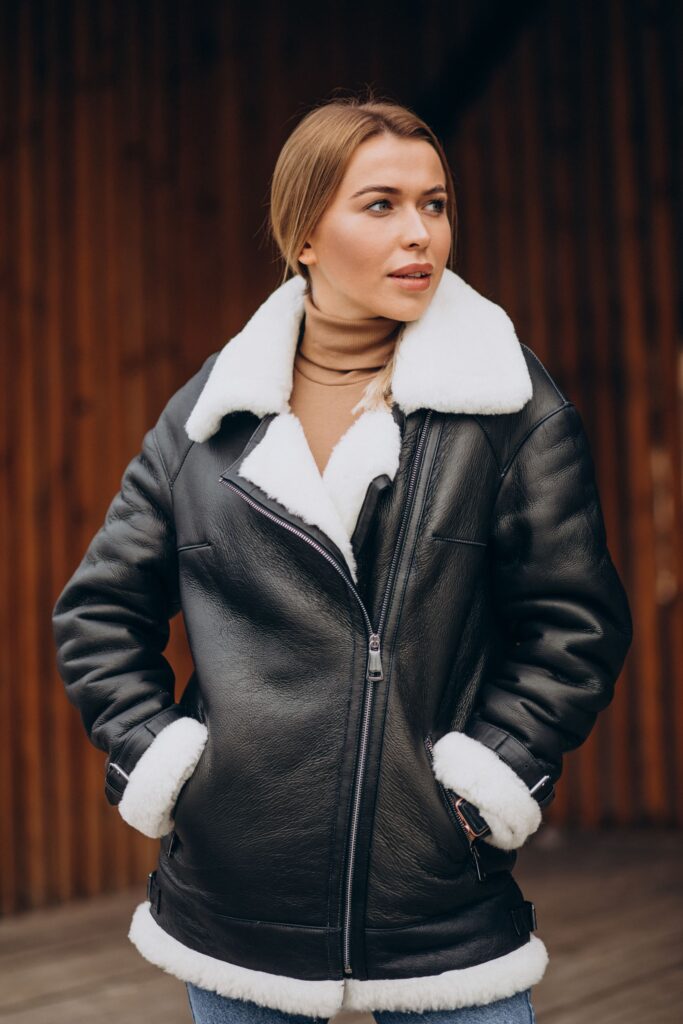
The outer layer/outer shell is the final and essential layer of protection against the elements. Its purpose is to keep you dry and protect the inner layers from wind and rain.
Ideal materials for the outer layer include Gore-Tex, waterproof polyester, and insulated shells such as shell jacket, designed to be water-resistant and provide added warmth.
Examples of outer layer clothing include rain jackets, parkas, and ski jackets to help stay warm.
The Importance of Layering in a Specific Order
The order in which you layer your clothing is crucial for achieving maximum style and comfort.
By layering with the base, mid, and outer order, you ensure that each layer works in harmony to provide optimal temperature regulation, style, and protection from the elements.
The base layer regulates your body temperature with insulating material, the mid-layer adds warmth and style, and the outer layer protects from the elements.
This layering order creates soft shells to help you maintain comfort and style in weather conditions.
Materials for Layering
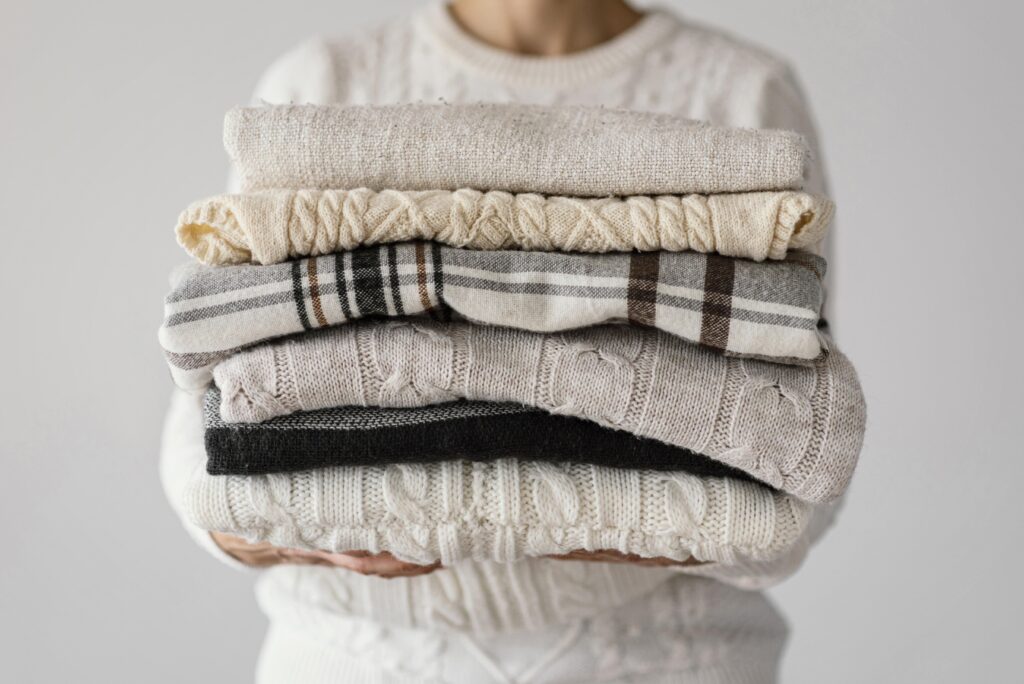
Fabrics and Their Properties
Selecting materials and clothing items for layering can profoundly affect your style and comfort.
There are many fabrics you can use when layering your clothes. Fabrics such as cotton, polyester, merino wool, and down. Each type has its own characteristics. The next-to-skin layer is crucial for wicking away moisture and keeping the skin dry.
Cotton is a lightweight and breathable option, perfect for warm weather. It’s also highly absorbent, making it ideal for base layers.
Polyester is a synthetic material with unparalleled moisture-wicking properties, making it a top pick for the base and mid-layers. It also proves ideal for warm weather.
Wool, on the other hand, is a natural material that provides warmth and insulation. It’s also resistant to water, making it an exceptional mid or outer-layer selection in frigid conditions.
Down, a pliant and airy material, is often used in insulating jackets and vests due to its excellent warmth retention without adding heft, which makes it an optimal pick for mid and outer layers.
Clothing Items and Their Uses
The clothing items you choose for layering will also significantly affect your comfort and style.
For instance, base layer tops, such as long johns and undershirts, can regulate your temperature by wicking away moisture and keeping you dry.
In contrast, fleece jackets and a puffy jacket and pullovers are a favorite for mid-layers due to their warmth and softness, providing a stylish flair to your outfit while keeping you cozy in cool weather.
Outer layers, like rain jackets, parkas, and ski jackets, are constructed from materials like Gore-Tex or waterproof polyester and protect you from various elements such as rain, wind, and snow.
When layering, you must consider each layer’s purpose and the outcome you want in terms of temperature regulation, style, and protection from the elements.
This will assist you in choosing the appropriate materials and clothing items for each layer, ensuring that you stay both fashionable and comfortable, irrespective of the weather.
Choosing the Best Fabrics for Each Layer

Choosing the right fabrics for each layer is crucial in achieving optimal comfort and protection when layering.
Here are some tips to help you select the best fabrics for each layer:
Base Layer Fabrics: When choosing clothes for the base layer, pick breathable fabrics. Polyester and merino wool are great options for clothing layers that touch your skin. These fabrics keep your body dry and comfy by pulling moisture away from your body. Additionally, choose fabrics that fit snugly but not too tightly to prevent chafing and irritation.
Mid-Layer Fabrics: When selecting fabrics for mid-layers, consider the level of warmth and insulation you need. Fleece is a popular mid-layer material because it provides warmth and softness, while down jackets are also a great option for lightweight insulation. Alternatively, synthetic materials like polyester or nylon are durable and quick-drying.
Outer Layer Fabrics: For outer layers, pick fabrics that can protect you from rain, wind, or snow. Look for materials that are waterproof and breathable. Materials such as Gore-Tex or other high-performance synthetic materials are all great options. These fabrics are made to battle intense weather conditions.
It’s also essential to consider the weight and thickness of each layer.
When layering, choose thinner fabrics for the layer closest to your skin and gradually choose thicker and heavier fabrics for the outer layers.
This layering approach allows you to easily adjust your temperature by removing or adding layers as needed.
Layering for Specific Seasons and Occasions

Layering is more than just a way to keep yourself warm; it’s an opportunity to adapt your dressing to the changing seasons and dress appropriately for various occasions.
Here’s a guide to layering for specific seasons and occasions to help you stay both fashionable and comfortable:
Spring
The weather in spring can be erratic, necessitating having layers readily available to add warmth as needed.
Light jackets, vests, and long-sleeve shirts are excellent examples of appropriate layering pieces for spring. They can not only provide warmth, but also add a stylish edge to your outfit.
Spring layering calls for lightweight yet stylish pieces like a tie front blouse, perfect for pairing with jackets or cardigans.
Summer
The focus during summer is on staying cool and comfortable, which necessitates the use of lightweight materials such as cotton, linen, or rayon in your layering pieces. Shorts, t-shirts, and sundresses are all suitable summer layering options. The key is to pick breathable materials that keep you cool and comfortable.
Fall
As the temperature drops, it’s critical to have layers available to add warmth. Light jackets, scarves, and long-sleeve shirts are suitable layering options for fall. Adding these pieces to your outfit will help keep you warm and protected from the elements.
Winter
Layering is crucial to stay warm and protected from weather elements. Heavy jackets, gloves, merino wool clothing and scarves are all suitable clothes for winter.
Choosing materials that provide insulation and keep you warm, such as wool, down, or synthetic materials, as clothes for winter is crucial. By layering in winter, you can remain stylish and warm, no matter how cold.
Clothing Fit for Layering
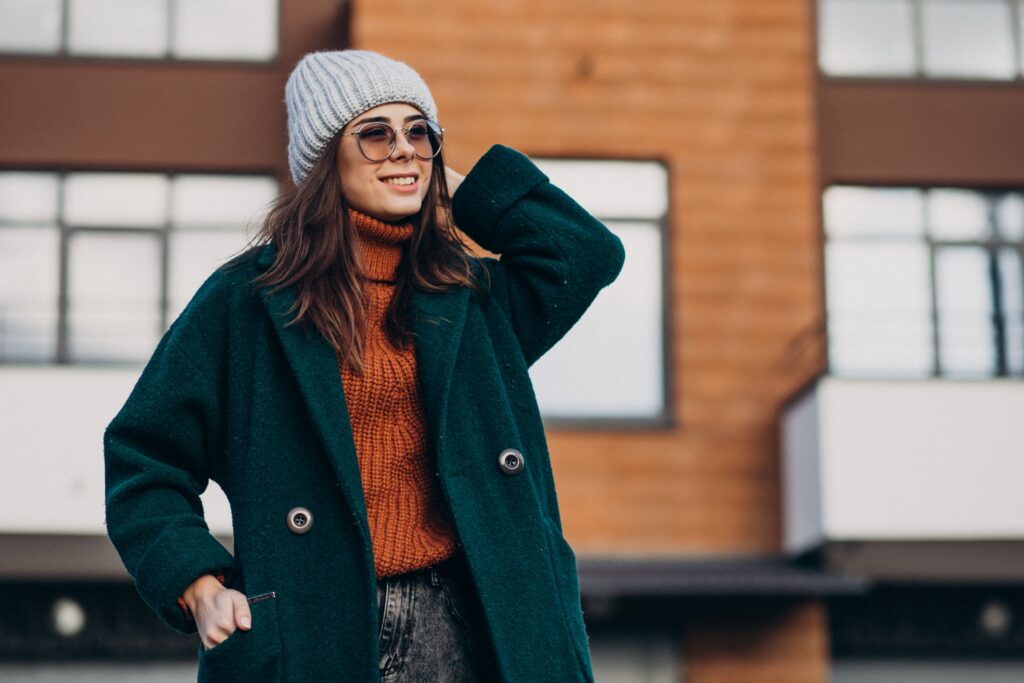
Layering clothes is a fashion trend that keeps you warm during colder weather and allows you to showcase your fashion sense. To master the art of layering, it’s crucial to understand the optimal fit for layering basics.
Ideal fit for each layer
Base layer: The base layer or bottom layer should have a snug, next-to-skin fit to maintain skin contact, and you must choose a comfortable and breathable material. To keep you warm and comfortable, go for form-fitting tops and bottoms.
Mid-layer: The mid-layer should have a looser fit to add warmth. This layer acts as insulation, trapping warm air close to your body.
Outer layer: The outer layer should have ample room for movement and layering to protect you from weather elements. These clothes should provide more warmth, making it crucial to choose materials to prevent cold conditions. Parkas, puffer jackets, and raincoats are all excellent outer layer options for the winter wardrobe.
Balancing fitted and loose layers
To create a stylish and flattering look, it’s essential to strike a balance between fitted and loose layers.
Avoid the biggest mistakes of having many fitted layers. Bulky, fitted layers can make your skin dry and also impede movement. You should create only two layers for the fitted clothes, with a loose top layer.
The perfect balance can be achieved by starting with two layers of fitting clothes, adding a looser mid-layer, and finishing with a roomier top layer.
This allows you to infuse warmth and texture into your outfit while still maintaining a flattering silhouette.
Impact of Layering on Body Shape
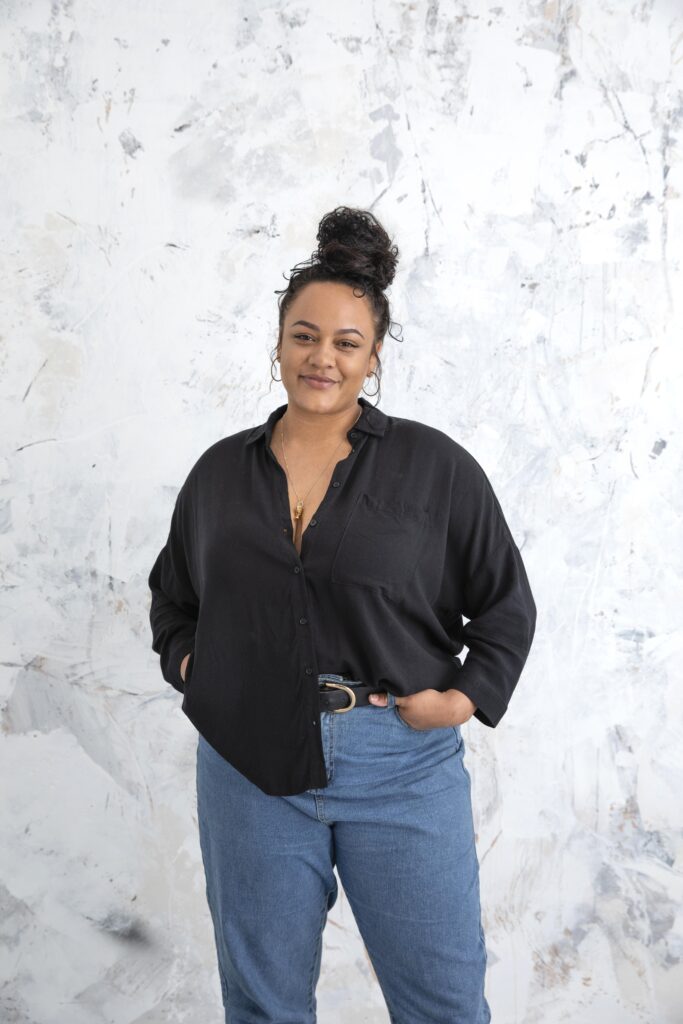
Layering is a powerful styling technique that can be used to create a wide range of fashion-forward looks. But, it’s also important to understand how layering can impact body shape.
The way that you layer your clothing can either enhance or detract from your natural silhouette, so it’s important to be mindful of how different layers will fit together.
Tips for layering to flatter your body shape
Hourglass: If you have an hourglass figure, it’s important to accentuate your waist and curves. Try pairing fitted layers, such as a tight-fitting turtleneck and a pencil skirt, with a belted cardigan or a structured blazer to create definition.
Pear: If you have a pear-shaped body, it’s important to balance your proportions. Try layering a long tunic, flowy blouse over leggings, or skinny jeans to balance your hips and thighs.
Straight: If you have a straight body shape, layering can be a great way to add dimension. Try combining voluminous pieces, such as an oversized sweater with a tulip skirt, to create curves where they may be lacking.
Apple: If you have an apple-shaped body, layering can be a great way to disguise your midsection. Opt for long, flowy pieces that drape over your tummy, such as a tunic over leggings or a maxi dress with a cardigan.
By following these tips and understanding how layering can impact your body shape, you can create outfits that flatter your figure and help you feel confident and stylish.
Personal Style and Creativity in Layering

Personal style and creativity play a crucial role in the art of layering. Here are some guidelines for creating a unique and stylish layered look:
Accessorizing a Layered Outfit: Accessories are vital in layering, as they allow you to add a touch of personal style and creativity to your ensemble. Statement necklaces, bold earrings, scarves, hats, and statement belts are excellent layering accessories that add interest and texture to your outfit.
Layering for Specific Body Types: When it comes to layering clothes, one size doesn’t fit all. The best layering styles for different body types can enhance your natural silhouette and flatter your figure.
For example, curvy women can opt for looser mid-layers, such as long cardigans or open-front jackets, that create a streamlined look and draw attention to the waist. On the other hand, petite women can opt for lighter and shorter layers that add interest without overwhelming their frame.
By considering your body shape and proportions, you can create a layered look that is both stylish and flattering.
Tips and Suggestions for Creatively Layering
There are several ways to layer your clothing, including creatively
Mix and match textures: Combining different textures, like pairing a suede skirt with a wool sweater, creates an interesting and unique look.
Play with proportions: Experimenting with various proportions, like wearing an oversized sweater over a body-con dress, creates a look that is both unexpected and stylish.
Experiment with colors: Mixing and matching colors when layering can create a bold and eye-catching look. For example, pairing a bright pop of color with neutral tones.
Layer with purpose: When layering, think about the goal of your outfit. Do you want to create a sleek, streamlined look or a statement-making outfit?
Conclusion
Mastering the art of layering clothes is an excellent way to showcase your style while staying warm and comfortable.
This guide covered the function and ideal materials for each layer, layering for specific seasons and occasions, the importance of clothing fit and balance, the impact of layering on body shape, and tips for layering creatively.
Whether you’re a seasoned fashionista or new to layering, this guide provides valuable insights and tips to help you craft fashionable and warm ensembles.
By following the guidelines and understanding the impact of each layer, you can confidently create layered outfits that flatter your figure, reflect your personal style, and keep you comfortable in any weather.
So go ahead, have fun, experiment, and start mastering the art of layering!
FAQ
What is the purpose of layering clothes?
The purpose of layering clothes is to add warmth and versatility to an outfit. By wearing multiple layers, you can create different looks for different temperatures and occasions, and adjust your outfit as needed throughout the day.


